A summary of the article:
- The terrorist attacks in the Russian Federation between 2015 and 2019 were linked with the activities of the Islamic State and its cooperation with Caucasus rebels;
- The Muslim Dagestan region, where several dozen terrorist attacks took place, has become the centre of terrorists’ struggle with Russia;
- In regard to international security, both Donald Trump and Vladimir Putin have admitted that the fight against terrorism could provide a common platform for improving relations between Russia and the United States;
- In 2019, the Federal Security Service of the Russian Federation (FSB) dismantled 78 international terrorist cells operating on Russian territory;
- The Government of the Russian Federation uses anti-terrorism operations (and strictly counter-terrorist operations) to achieve certain political goals.
For the last 10 years, Russia has been struggling with international terrorism which is constantly evolving and permanently destabilising the country’s internal security. New terrorist groups have started to operate in its territory, the influx of supporters of terrorism has increased (this process had previously been seen mainly in the Middle East and Africa – including the Islamic State and al-Qaeda, and in Central Asia, e.g. the East Turkestan Islamic Movement,) and separatist and nationalist groups previously fighting wars in the Caucasus have become active. This has resulted in a series of terrorist attacks occurring in the Russian Federation.
In the article, the author does not discuss causes of the outbreak of the Chechen wars, Vladimir Putin’s system of rule, Ukrainian and Russian groups participating in the armed conflict in Ukraine and retaliatory and military actions undertaken by the Russian Federation in the Caucasus. The aforementioned topics shall be analysed separately.
Terrorism in the Russian Federation in the 21st century
Back in 2012, before the series of attacks in the French Republic, the ongoing conflict in the North Caucasus had been described as the most brutal in Europe. In the clashes between the forces of the Russian Federation and the terrorists (as classified by the Russian Federation,) between 700 and 800 people a year were killed in the region. Between 1991 and 2011, there were nearly 1500 terrorist attacks in the territory of the Russian Federation carried out by terrorist groups and groups originating from the Caucasus.
The terrorist attacks in the Russian Federation occurring between 2015 and 2019 were linked with the emergence of extremist groups, such as al-Qaeda and the Islamic State of Iraq and the Levant (Islamic State of Iraq and Syria, ISIL, ISIS, Daesh) and their cooperation with rebels from the South and North Caucasus. International terrorist groups have begun their expansion into the entire territory of the Russian Federation, mobilising the government to undertake counter-terrorism actions. The analysis of these phenomena is also crucial due to the consequences for other countries that directly border Russia, including possible terrorist consequences for Poland.
Table 1. Russia’s position indicating the functioning of the state in the context of development of terrorism according to the Global Terrorism Index between 2014 and 2019.
| Global Terrorism Index/ Year | Position in Europe | Position in the world |
| 2014 | 1 | 11 |
| 2015 | 2 | 23 |
| 2016 | 3 | 30 |
| 2017 | 3 | 33 |
| 2018 | 4 | 34 |
| 2019 | 4 | 37 |
On the regional scale, between 2002 and 2017, in the region of Eurasia comprising of Afghanistan, Armenia, Azerbaijan, Belarus, Georgia, Kazakhstan, Kyrgyzstan, Mongolia, Republic of Moldova, Tajikistan, Turkmenistan, Ukraine and Uzbekistan, as defined by the Organisation for Economic Co-operation and Development (OECD,) as well as on the territory of Russia, 3852 attacks took place and – as a result – 2430 people were killed. At the same time, Russia, together with Ukraine, recorded 99% of all deaths resulting from terrorist attacks in the region. The Russian Federation also noted the fastest increase in Europe and the eighth fastest increase in the world in the number of deaths resulting from terrorism, with an average of 70 deaths in attacks yearly. However, it should be noted that according to the Soufan Group (www.soufangroup.com,) more than 17000 people from 50 countries have travelled to fight in eastern Ukraine, joining both Ukrainian nationalists and pro-Russian separatists. Such actions could also be considered terrorism.
Contemporary terrorist groups in the Russian Federation
The Chechen Rebels (Chechen Separatist Movement) are considered by many researchers to be the most dangerous terrorist group in Russian history. From 1999 to 2013, it was responsible for most attacks described as “terrorist” in the Russian Federation. However, recently its activity has decreased. Another terrorist organisation was established on 31 October 2007 by one of the leaders of the North Caucasian rebels, namely Dokka Umarov. He resigned from the post of President of the Chechen Republic of Ichkeria to establish the Caucasus Emirate – an Islamic quasi-state which up till now constitutes a basis for organisational structure for North Caucasian terrorists. As noted by experts, the process of creating terrorist structures dates back to 1999. Jamaats[1] functioning in Dagestan (Shariat Jamaat,) Kabardino-Balkaria, Ingushetia (Caliphate Jamaat, Taliban Jamaat,) Karachay-Cherkessia and North Ossetia were groups which later went on to form the Caucasus Emirate. In December 2009, the Supreme Court of the Russian Federation prohibited the activities of the Caucasus Emirate, designating it a terrorist group. The third of the most dangerous organizations as of today is Wilayah al-Qawqaz (Islamic State of Iraq and the Levant – Caucasus Province) founded in June 2015 with Rustam Asildarov as its leader.
Many of jamaat leaders have committed themselves to the loyalty of the newly-formed organization which led the Islamic State to absorb a large number of supporters of the Caucasus Emirate. It is estimated that the war in Syria against Russia was joined by some 2800 fighters from Chechnya, Dagestan, Ingushetia and Kabardino-Balkaria, as well as from republics of Central Asia, such as Azerbaijan, Kyrgyzstan, Uzbekistan and Tajikistan. Currently, in accordance with the legislation of the Russian Federation, the Federal Security Service of Russia (FSB) recognizes 31 domestic, international and foreign terrorist organizations[2].
In 2015, the threat of terrorism in Russia intensified significantly, not only from Chechens-Dagestans and other Caucasian organizations fighting for independence, but also from the Islamic State. When Russia launched a military operation against rebels in Syria in September 2015, it was immediately met with a response from Jabhat an-Nusra (Levant Front, also known as al-Nusra Front in Syria,) an al-Qaeda faction. At that time, the leader of the terrorist group, Abu Mohammad al-Julani, called for retaliatory attacks on Russian citizens in Syria. The reaction of those who supported the terrorist organisation was almost immediate, and as soon as 13 October 2015, two rockets hit the Russian embassy in Damascus. Thus, the terrorist groups that up till then had been operating in Africa and the Middle East, began to intensify their operations against the Russian Federation.
In 2017, two more dangerous groups emerged in Russia and the Eurasian region. One of them was the Islamic State of Iraq and the Levant – Caucasus Province, responsible for the first attack on the Russian military base in southern Dagestan which took place on 2 September 2015. In a social media video, Abu Mohammad al-Adnani al-Shami[3] called on the Islamic State’s supporters in the Caucasus to join the fight in territory of Russia, claiming it would be more effective than coming to the Middle East to help terrorists in Iraq and Syria. This was a new approach that undoubtedly increased the terrorists’ capabilities and – at the same time –allowed them for an effective remote indoctrination of their supporters, encouraging attacks in the supporters’ country of residence. The other group was an al-Qaeda faction – Katibat Imam Shamil (Imam Shamil Battalion,) describing itself as “Knights of Islam.” The battalion admitted to the 3 April 2017 suicide attack on the Saint Petersburg Metro between Sennaya Ploshchad and Tekhnologichesky Institut stations, where 15 people were killed and 45 injured. Yet another bomb was found at one more Metro station but disarmed before it would explode. Russian authorities arrested 11 individuals in connection with the attack and confirmed that they originated from Central Asia. Both groups carried out the bloodiest attacks in their history in 2017, indicating an increased presence of Islamist-related terrorism in Russia and the Eurasian region.
Table 2. Ranking placing according to Global Terrorism Index in 2002-2016 and 2019 indicating the functioning of the countries in the region of Russia and Asia in the context of terrorism development
| Country | Position in the world between 2002 and 2016 | Position in the world in 2019 |
| Ukraine | 17. | 24. |
| Russia | 33. | 37. |
| Tajikistan | 72. | 50. |
| Kazakhstan | 67. | 85. |
| Kyrgyztan | 79. | 87. |
| Armenia | 75. | 94. |
| Georgia | 77. | 89. |
| Azerbaijan | 95. | 103. |
| Moldova | 107. | 123. |
| Uzbekistan | 123. | 135. |
| Belarus | 128. | 138. |
| Turkmenistan | 134. | 138. |
Nine out of the twelve countries were rated higher and two maintained “neutral” rating. Only Tajikistan’s rating deteriorated. Despite the generally lower level of terrorist activity, an increase in the Islamic State’s activity was noted (in 2015-2018, the organization was responsible for at least 30 attacks resulting in 90 deaths.) More significantly, 72% of the attacks were not attributed to any group (although some of them are unofficially attributed to Chechen separatists or groups involved in the conflict in Ukraine.)
As far as foreign fighters in Syria are concerned, their largest number comes from Russia, Tunisia, Jordan, Saudi Arabia and Turkey. Statistics reveal that as many as 5000 recruits were citizens of the Russian Federation. Due to the geographical proximity of Turkey and Syria, which facilitates increased migration, Russian-speaking terrorists come mostly from Chechnya and Dagestan. Worth noting is the fact that in 2015, Russian citizens accounted for approximately 8% of all the Islamic State’s fighters. Russian was also the third most widely spoken language by the Islamic State, after Arabic and English. This also indicates that Russian has become one of the main languages of international communication of terrorists. The main reason for this is increased activity of extremist organizations in Russian territory and neighbouring countries. It should also be pointed out that nearly 1800 women originating from Russia (with 1000 mainly from the provinces of Chechnya and Dagestan) and the Eurasian region fought in the ranks of the Islamic State, of whom about 2% returned to Russia.
A decade of terrorist attacks in the Russian Federation
Terrorist attacks in recent Russian history are no different from those carried out in the territories of the French Republic, Belgium, or the United Kingdom. Their specifics and operational methods remain unchanged; the only difference being the motivation and area of perpetrators’ operations. Terrorists, who had previously fought for independence in the Caucasus region, subsequently decided to act on the entire territory of the Russian Federation. These are mainly separatists from the Northern Caucasus (also referred to as Fore-Caucasus.) Many of the rebels altered their long-standing campaign of terror aimed at Russia to support the Islamic State.
In 2015, the centre of the terrorists’ fight with Russia became the Muslim Dagestan region, where several dozen terrorist attacks took place. Initially, most Islamist-inspired attacks were carried out against Russian security forces. Next to assaults on the police and shelling of hotels and churches, the Islamic State constantly posted messages and statements on Internet portals, calling for a continuous attack on Russia. Terrorists also used the Internet to admit to individual attacks. At the same time, the organisation once again called all supporters of the Islamic State to launch independent attacks in Federation’s territory.
On 29 March 2010, a bombing in the Moscow Metro took place. Terrorists from the militant Islamist Caucasus Emirate admitted to the bombing. The explosions occurred at two stations (Lubyanka and Park Kultury,) approximately 40 minutes in between. At least 40 people were killed and over 100 injured. Immediately upon the attack, the leader of the Emirate of the Caucasus, Dokka Umarov, published an online video in which he stated that such attacks in Russia would continue unless the Muslim states in the North Caucasus region are granted independence.
The Muslim Religious Union in Russia has repeatedly publicly condemned terrorism and extremism referring to them as actions not supported in Islam. In response to the terrorist attacks in the Moscow Metro, the Chief Mufti of Russia, Talgat Tadzhuddin, said that the Muslim communities of Russia condemned those who dared to commit such barbaric inhuman crimes.
On 24 January 2011 at 4:30 PM, a bomb attack occurred on Domodedovo International Airport located 42 kilometres southeast of the centre of Moscow. At that time, it was the largest airport in Russia, capable of handling more than 20 million passengers a year (nowadays, this number has increased to 30 million with the country’s top spot occupied by Sheremetyevo International Airport with traffic of 40 million passengers a year.) On 8 February 2011, the terrorist organisation the Emirate of the Caucasus (Kavkazskiy Emirate)[4] admitted to the attack in a video recording made available on the Internet by its leader Dokka Umarov. The suicide bombing by Magomed Yevloyev took place in the international arrivals hall. The attack killed 37 people and injured 173. One year later, the Investigation Committee of the Russian Federation concluded that the attack had been carried out by a group of the Caucasus Emirate. 17 individuals from the terrorist organization were accused of carrying out the operation. Eventually, in 2013 the District Court in Moscow sentenced Islam and Ilez Yandiyev, as well as Bashir Khamkhoyev, to life imprisonment for providing the terrorist with explosives, helping in getting out of the North Caucasus and organising a stay in Moscow. The suicide terrorist’s brother, Ahmed Yevloyev, was sentenced to 10 years in prison. In total, between 1992 and 2011, terrorists from the North Caucasus carried out 749 bomb attacks.
On 29 December 2013 at 12:45 PM, a suicide attack took place at the Volgograd-1 railway station in the city of Volgograd, in the Volgograd region, located in southern Russia. As a result of the attack, 18 people were killed (including two bombers) and at least 44 more were injured. The bomb contained an equivalent of 10 kilograms of TNT. The attack was carried out by a terrorist organization from Dagestan. Two months earlier two buses were bombed in Volgograd.
In October 2015, a Russian plane flying from Sharm el-Sheikh in Egypt to Saint Petersburg crashed in the northern part of the Sinai Peninsula. The Russian authorities stated that the crash had been caused by an explosive device on the board of the plane. As a result of the terrorist attack, all passengers of Metrojet Flight 9268 which was an international charter flight operated by the Russian airline Kogalymavia (branded as Metroyet) were killed. On 31 October 2015 at 6:13 A.M., Airbus A321-231 operating the flight was destroyed by a bomb shortly after its departure from Sharm el-Sheikh International Airport headed for Pulkovo airport in Russia. It total, 224 people were killed, including 212 Russian citizens (7 crew members,) 4 Ukrainian citizens and one from Belarus. The assassination was conducted by the Islamic State, which admitted to carrying out the attack.
On 3 April 2017, a terrorist attack with the use of explosives took place in the Saint Petersburg’s Metro, between Sennaya Ploshchad and Tekhnologichesky Institut stations. In connection with this incident a total of 15 people (including the perpetrator) were killed and at least 50 were injured. The explosive was in a briefcase carried by the perpetrator Akbarzhon Jalilov, a Russian citizen born in Kyrgyzstan. He was associated with Imam Shamil Battalion (a Caucasian/Russian al-Qaeda faction.) The same day, Saint Petersburg was visited by Russian President Vladimir Putin.
On 27 December 2017, a bomb was detonated in a supermarket in Saint Petersburg injuring 13 individuals. A self-constructed device was placed in one of the store’s lockers. None of the terrorist organisations has admitted to the attack; however, Vladimir Putin declared the explosion a terrorist act.
On 4 May 2018, in Nizhny Novgorod, a man started shooting at the police during an inspection. As a result of the attack, three policemen were injured and the bomber was killed. In the course of investigation, it was concluded that he had come from the Islamic State.
For reasons of international security, in 2017, both Donald Trump and Vladimir Putin admitted that the fight against terrorism could provide a common platform for improving relations between Russia and the United States (relations between Washington and Moscow were considered tense due to disputes over Ukraine and Syria, as well as allegations that Russia had interfered in the American presidential elections.) In December 2019, President Putin expressed his gratitude to President Trump for passing information regarding planned terrorist attacks in Saint Petersburg. According to information provided by the Federal Security Service, on 27 December 2019, two Russians preparing an attack during New Year’s celebrations were detained. The Kremlin stated that both President Putin and President Trump were planning to maintain bilateral cooperation to combat terrorism. Worth pointing out is the fact that information from Russia was also passed to the U.S., e.g. in 2011, when the FSB warned the FBI that Russian immigrant Tamerlan Tsarnaev might have been associated with jihadist groups. The U.S. service examined the lead, but closed the case due to lack of evidence. Two years later, Tsarnaev and his brother Dzhokhar detonated bombs (of their own making) during a marathon in Boston. Three people were killed and 264 wounded in the attack.
Map with the numbers of Islamic terrorist attacks in particular European countries since 1979. *51,6% people killed in Europe by Islamic motivation was killed in Russia.

Anti-terrorist legislation in the Russian Federation
The largest terrorist attacks in the Russian Federation at the turn of the 20th and 21st century, which forced Russian authorities to improve anti-terrorist system and create legal regulations, were as follows: the attacks in Budionovsk (1995,) Vladikavkaz (1999,) Moscow’s Dubrovka Theatre (2002,) and the first attack in the Moscow metro (2002.) Towards the end of the 1990s, the Commonwealth of Independent States Anti–Terrorism Centre was established on the initiative of Russia. Its main task was to develop legal instruments allowing international cooperation (within the Commonwealth of Independent States) in fight against terrorism. It is worth noting that it was the Russian Federation that initiated the creation of the Regional Anti-Terrorism Structure (RATS) within the Shanghai Cooperation Organisation[5]. It was established at the summit held in Tashkent, Uzbekistan on 16-17 June 2004. On 21 April 2006, the SCO announced plans to combat cross-border crime and fight against terrorism.
The first law regulating fight against terrorism in the territory of the Russian Federation was in force between 1998 and 2006. It defined legal regulations and organisational basis for combating terrorism. In 2006, due to increased activity of terrorist groups and developments in the Caucasus, law on counter-terrorism was passed. The act entered into force on 6 March 2006. By virtue of the amendment of 5 May 2014, the concept of a terrorist act was redefined as follows: “a terrorist act is to execute an explosion, arson or other act that intimidates a population and creates a risk of killing a person, contributing to significant material damage or other serious consequences, in order to destabilise the functioning of authorities or international organisations, or to influence or threaten to influence their decision-making.”
More importantly, Russian legislature indicates that it is possible to use the Armed Forces of the Russian Federation to combat terrorism. This may involve: stopping the aircraft, operating in the seas and waters belonging to the Russian Federation and in open waters to protect its maritime transports, participating in special counter-terrorist operations, as well as taking special actions outside the country in the event of threats to the Federation or supporting troops stationed in regions exposed to terrorist attacks.
Furthermore, Russian counter-terrorism legislation is becoming increasingly stringent. In 2016, the Yarovaya law was implemented imposing increased supervision of FSB data, criminal liability for failure to report plotting a terrorist offence and imprisonment (up to 14 years) for extremism, terrorism and participation in mass riots.
The Yarovaya amendments also prohibit proselytism, praying or distributing religious material outside “designated venues,” such as officially recognized religious institutions. However, the definitions are so vague that many may be freely interpreted. Thus, Russian services can arrest any person suspected of terrorist activity.
The way Russia characterises terrorism seems to be of extreme importance in the process of examining threats. According to this definition, terrorism is threatening or using violence against individuals and organisations by destroying (or damaging) property, facilities and activities that can cause death. The Russian government has also established that groups such as Hamas and Hezbollah are not deemed terrorist organisations for the following reasons:
- they do not engage in activities that seek to change the constitutional system of the state by using terrorist methods;
- they have no connection to extremist groups in the North Caucasus.
The hitherto experience in warfare during armed conflicts is of extreme importance in the anti-terrorist actions undertaken by the Russian Federation against terrorist groups. Russia has already been involved in combating terrorism which nowadays is referred to as of religious nature (i.e. Islamic.) Initially, the Federation experienced attacks from separatists (whom it described as terrorists) in the war-torn northern Caucasus region. This was during the suppression of the Chechnya’s independence wars in 1994-1996 and 1999-2007, and then again in 2008-2015, during the suppression of the multi-ethnic jihadist grouping of the Caucasus Emirate (which was intended to be a state which, apart from Chechnya, would include Dagestan, Ingushetia, Ossetia, Kabardo-Balkaria and Karachay-Cherkessia.) The Emirate of the Caucasus was considered a terrorist organization by the United States and the Russian Federation alike.
With the development of the anti-terrorist system in Russia in mind, it is also worth considering the reasons for its creation. The fact that the full course of the terrorist attacks on the school in Beslan in 2004 is not known remains controversial. Some authorities, the families of the victims and independent experts have called for full investigation into the case. Being conducted by the Russian General Prosecutor’s Office, it however remains open until now. In 2009, local press reported that the attack had been prepared by the Russian security services, and at the same time, a list of the services’ links to terrorists had been revealed. It was indicated that the main motive of the Russian authorities was to strengthen the powers of the services and military control in the region. There have also been justified doubts regarding the fact that before the attacks at least 11 terrorists had been detained (with their fingerprints taken,) but released immediately afterwards. How 32 terrorists reached the school in Beslan also remains unresolved, as they were only stopped by one militia patrol (which was overpowered by the bombers) on their way from extremely guarded territories of Ingushetia and North Ossetia. Never in Russia’s history has a terrorist attack on such a scale been repeated.
In addition, what is also of importance from the point of view of Russia’s counter-terrorist activities, the international atmosphere after the 11 September 2001 attacks in the United States, helped the Russian Federation achieve tactical rapprochement with the West (as part of the joint fight against terrorism) and justified in the eyes of the world decisive action in the Caucasus.
Terrorist threats in the Russian Federation
There is a risk that terrorist cells consisting of jihadist insurgents who remained in the war-affected region of the North Caucasus, particularly in Dagestan and Chechnya, will try to carry out terrorist attacks throughout Russia. Today, the Dagestan faction of the Islamic State remains the most active group. Due to its continued activities in Syria and unstable situation in the south of Russia, the Russian Federation constantly monitors trends and pressures in the regions of armed conflict.
The potential threat posed by “lone wolves” or “self-proclaimed terrorists” who have come to Russia and decided to support terrorist organisations, may today pose one of the greatest challenges to the Russian government. This is related to mass departure of Russian citizens to the Middle East and their indoctrination, followed by their return to the country and further attempts to carry out terrorist activities. The exact number of such individuals remains unknown but the security services of the Russian Federation are aware of the threat the individual’s terrorist activity may pose. The key in this aspect is to determine how (i.e. with which means and tools) and where such attacks may occur. One of the main communications means through which terrorists may contact each other and discuss individual targets are social networks and game platforms available online. There they distribute training materials acting as encouragement and mobilisation for attacks. This ensures that indoctrinated terrorists are in touch with their superior in Africa or the Middle East. Therefore, verification of all circumstantial evidence and sources requires constant involvement of Russian services. The Russian government also takes into account similar threats resulting from continuous migration and development of cyberterrorism.
Although the number of victims in the northern Caucasus has decreased in the last five years, a number of attacks and skirmishes between rebel groups and Russian forces in the republics of Dagestan, Chechnya, Ingushetia, and Kabardino-Balkaria still take place. The Russian government is aware that the threat of terrorism can rapidly increase if violence and conflict in the northern Caucasus escalates. Hence, Russian anti-terrorist forces are constantly working in these regions to monitor emerging threats.
Equally important is the fact that politicians in the autonomous republics of Caucasus may also want to maintain a certain level of terrorist threats, so as to use it as an important argument in negotiations with the Russian government for increasing funding. Financial assistance, and thus multiplied support from Moscow, was particularly noticeable during the attacks that took place in Ingushetia and Dagestan.
Since the beginning of 2017, Russian security forces have been taking preventive measures in the country’s largest cities, including Moscow, Saint Petersburg, Nizhny Novgorod and Stavropol. They have been aimed at protecting public transport, high-traffic places and mass events and involve the secondment of police and soldiers to patrol the streets, as well as establishment of intensive control zones to maintain security in critical areas of the cities. Border control and international cooperation are equally important elements. Past experience with terrorist attacks in Russian territory and repeated threats from terrorists are the basis for intensifying protection. This is mainly due to the fact that terrorist organisations, such as al-Qaeda and the Islamic State, in their statements continue to call for attacks to be carried out in Russian territory and to join groups through individual attacks.
In 2018, Russian services prevented 6 terrorist attacks. Two of them were to be carried out on the day of the presidential election, i.e. 18 March 2018. A total of 189 suspects were detained and 12 terrorist cells were disbanded. In 2017, Russian security forces prevented 18 terrorist attacks, one of which was to be carried out on 1 September, and another one on 31 December. According to information provided by the National Anti-Terrorism Committee in Moscow, terrorists came mainly from Ingushetia, Dagestan, and the Islamic State. In October 2018, having detained in Moscow 18 individuals (including 11 Russian citizens) possessing weapons, explosives and flags of the Islamic State, the director of FSB, Alexander Bortnikov pointed out that international terrorist organisations are increasingly trying to create cells in Russia by involving individual citizens.
In the first half of 2019, nearly 13000 violations of counter-terrorist protection in the country were detected. The Russian politician pointed out that the places of high population should fully correspond to the nature of the threat, the operational environment and should be protected by efficient use of resources, forces and means. In total, in 2019, Russian services prevented approximately 21 terrorist attacks (such number of counter-terrorist activities was disclosed to the media.[6])
Simultaneously, in 2019, the FSB was allegedly to break up 78 international terrorist cells operating in Russian territory. Almost all of them were connected with the Islamic State. The greatest threat to the country now constitutes the migration of terrorists moving from Afghanistan through Tajikistan, Uzbekistan and Kazakhstan to Russia. Alexander Bortnikov indicates that China is not willing to cooperate on behalf of migrating terrorists from Central Asia, hence Russia is going to aim to strengthen direct cooperation with services of Tajikistan.
Vladimir Zorin, a member of the Presidium of the Council for Interethnic Relations and Deputy Director of the Institute of Ethnology and Anthropology of the Russian Academy of Sciences, indicated that social and economic inequalities, lack of opportunities for young people and corruption create an environment that makes it possible to promote extremist ideas in the Russian Federation. To prevent the spread of radical ideology, Zorin proposed to intensify educational work in kindergartens and workplaces, including universities and special educational institutions. He stressed that it is necessary to improve the employment rate, especially amongst young people who leave the republics of the North Caucasus to find work. In the same vein, Alexander Brod, member of the Presidential Council for Civil Society and Human Rights spoke in an interview with Vestnik Kavkaz. He pointed out that the situation in the Caucasus was difficult, as people who had fought in radical groups in Syria were returning home. According to Russian law enforcement agencies, recruitment to terrorist organisations is still ongoing. The North Caucasus region is a risk zone with a large number of extremist groups. Low standard of living, lack of judicial bodies and inefficiency of municipal and regional authorities have had an impact on the security situation. It is no coincidence that thousands of young people from the North Caucasus region have travelled to Syria. As noted by experts, this dangerous trend may spread to the Central Asian regions, too. In a long-term strategy, it is important to engage forces and resources to fight extremism, in which military action is only secondary to education and support for young citizens which may offer them a chance for personal development.
Conclusion
Terrorism as a recurring phenomenon is constantly evolving. Its mutations and regularities are unpredictable due to a number of interlinked entities. It is extremely difficult to determine the type of terrorism occurring in the Russian Federation. So far, it has been most closely related to the notion of separatist terrorism, also known as anti-nationalist or national liberation terrorism. Since 2017, when Islamic groups became active in Russian territory, the state has been dealing with religious terrorism.
Despite the activity of terrorist organisations in Russian territory, the citizens of the country are not oriented towards strictly jihadist activities as much as it took place in France in 2014-2019. Muslims make up about 10% of the population of the Russian Federation but a large part of it is made up of individuals from the Eurasian region. The followers of Allah (especially in Moscow) are seen as assimilated people, speaking Russian and following moral code.
It seems that the government of the Russian Federation is aware of emerging threats and consequences that it may suffer as a result of successive terrorist attacks. The hitherto experience and subsequent threats are leading to re-analysis of the current conditions and re-definition of the objectives of counter-terrorist activities. A significant issue remains the fact that the nature of the threat is widely known and the terrorists do not refrain from revealing that further actions against the Russian Federation are to occur in the future.
Equally important is the fact that the practice of how the Russian government may make use of anti-terrorist actions (and then strictly counter-terrorist actions) to achieve its own goals. To name a group (of individuals or political opponents) terrorists has become very common, which is one type of rationalization of activities of offensive nature, which can be perceived as negative for the purpose of achieving certain goals. Terrorism fits very easily into the general ideology of fighting threats, allowing for decisive actions which could ruthlessly stop any form of escalation. Therefore, the essence of anti-terrorism and counter-terrorism activities is to actually form the definition of terrorism and terrorists. The former has always caused problems as there have been over 300 different definitions of the phenomenon. The latter defines individuals behind negative actions aimed at harming outsiders (civilians); however, it also does not exemplify all of the selected representatives of organisations (groups) in a precise way. Therefore, officials in the Russian Federation may detain someone on suspicion of terrorism if such a suspicion arises (as in the case of Tatars’ continuous arrests in Crimea in 2019 and 2020.)
Sources:
11 killed, over 50 injured in St. Petersburg Metro blast.(2017, 4 April). Russia Today. Downloaded from: https://www.rt.com/news/383202-st-petersburg-blast-metro/.
A Year After St. Petersburg Subway Blast, Russia Says Probe Almost Finished. (2018, 3 April). Radio Free Europe Radio Liberty. Downloaded from: https://www.rferl.org/a/russia-peterburg-subway-bombing-probe-almost-finished/29141942.html.
Adamska-Rękawek, P. (2016). Terroryzm islamski w Europie. Islamofobia czy integracja? W: P. Sienkiewcz, P. Dela (red.). Metodologia badań bezpieczeństwa narodowego. T. VIII (10–21). Warszawa: Akademia Obrony Narodowej.
Amos, H. (2015, 8 June). Investigators Turn on Moscow’s Domodedovo Airport. The Moscow Times. Downloaded from: https://www.themoscowtimes.com/2015/06/08/investigators-turn-on-moscows-domodedovo-airport-a47237.
Attaques dans l’Aude: Radouane Lakdim était fiché S depuis 2014. (2018, 23 march). Le Figaro. Downloaded from: http://www.lefigaro.fr/actualite-france/2018/03/23/01016-20180323ARTFIG00222-qui-etait-redouane-lakdim-le-terroriste-presume-des-attaques-dans-l-aude.php.
Beslin, J., Ignjatijevic, M. (2017, 16 June). Balkan foreign fighters: from Syria to Ukraine, European Union Institute for Security Studies, Brief – Issue, (20), 1–4.
Chechen warlord Doku Umarov admits Moscow airport bomb. (2011, 8 lutego). BBC News. Downloaded from: https://www.bbc.com/news/world-europe-12388681.
Dearden, L. (2015, 31 October) Egyptian plane crash: Isis claims militants downed Metrojet flight but officials find no evidence of attack.The Independent. Downloaded from: https://www.independent.co.uk/news/world/africa/egyptian-plane-crash-isis-claims-militants-downed-metrojet-flight-but-officials-find-no-evidence-of-a6716241.html.
Death Toll in St. Petersburg Terror Attack Rises to 15. (2017, 12 April). The Moscow Times. Downloaded from: https://www.themoscowtimes.com/2017/04/12/death-toll-in-st-petersburg-terror-attack-rises-to-15-a57707.
Designations of Foreign Terrorist Fighters. (2015, 29 September). U.S. State Department. Downloaded from: https://2009-2017.state.gov/r/pa/prs/ps/2015/09/247433.htm.
Ellyatt, H. (2017, 28 December). Putin says St Petersburg supermarket bombing was an act of terrorism.CNCB. Downloaded from: https://www.cnbc.com/2017/12/28/putin-says-st-petersburg-supermarket-bombing-was-an-act-of-terrorism.html.
Grabowski, T. W. (2017). Terroryzm Północnokaukaski – źródła, przejawy i przeciwdziałanie zjawisku.Kraków: Ignatianum.
Griffin, A. (2017, 3 April). St Petersburg attacks: Isis celebrates explosions that killed 10 people. The Independent. Downloaded from: https://www.independent.co.uk/news/world/europe/st-petersburg-attacks-isis-russia-bombings-celebrate-islamic-state-response-a7664656.html.
Grotowicz, V. (2000). Terroryzm w Europie Zachodniej, Warszawa – Wrocław: PWN.
Hanoush, F. (2016, 14 September Fighters from the Caucasus Join ISIS to Fight Russia.Atlantic Council. Downloaded from: https://www.atlanticcouncil.org/blogs/syriasource/fighters-from-the-caucasus-join-isis-to-fight-russia.
Institute for Economics & Peace. (2014). Global Terrorism Index 2014 – Measuring and Understanding the Impact of Terrorism. Sydney: Institute for Economics & Peace.
Institute for Economics & Peace. (2017). Global Terrorism Index 2017 – Measuring and understanding the impact of terrorism, Sydney: Institute for Economics & Peace.
Institute for Economics & Peace. (2018). Global Terrorism Index 2018 – Measuring the impact of terrorism. Sydney: Institute for Economics & Peace.
Institute for Economics &Peace. (2015). Global Terrorism Index 2015 – Measuring and Understanding the Impact of Terrorism. Sydney: Institute for Economics & Peace
Institute for Economics & Peace. (2019). Global Terrorism Index 2019 – Measuring the impact of terrorism. Sydney: Institute for Economics & Peace.
International Crisis Group. (2012, 19 October). The North Caucasus: The Challenges of Integration (II), Islam, the Insurgency and Counter-Insurgency. Europe Report, 221, 1–40. Downloaded from: https://reliefweb.int/sites/reliefweb.int/files/resources/221-the-north-caucasus-the-challenges-of-integration-ii-islam-the-insurgency-and-counter-insurgency.pdf.
Joscelyn, T. (2015a, 13 October). Head of al Qaeda’s Syrian branch threatens Russia in audio message. FDD’s Long War Journal. Downloaded from: https://www.longwarjournal.org/archives/2015/10/head-of-al-qaedas-syrian-branch-threatens-russia-in-audio-message.php.
Joscelyn, T. (2015b, 2 September) Islamic State’s Caucasus ‘province’ claims first official attack on Russian forces, FDD’s Long War Journal. Downloaded from: http://www.derechos.org/peace/russia/doc/cauc30.html.
Joscelyn, T. (2017, 29 December). Islamic State claims its men planted bomb at St. Petersburg supermarket, FDD’s Long War Journal. Downloaded from: https://www.longwarjournal.org/archives/2017/12/islamic-state-claims-its-men-planted-bomb-at-st-petersburg-supermarket.php.
Karpov, S. (2013, 29 December). Suicide bomber kills at least 16 at Russian train station.Reuters. Downloaded from: https://www.reuters.com/article/us-russia-blast/suicide-bomber-kills-at-least-16-at-russian-train-station-idUSBRE9BS02S20131229.
Lia, B. (2005). Globalisation and the Future of Terrorism. Patterns and Predictions, London: Routledge.
Lokshina, T. (2016, 23 June). Draconian Law Rammed Through Russian Parliament. Human Rights Watch. Downloaded from z: https://www.hrw.org/news/2016/06/23/draconian-law-rammed-through-russian-parliament.
Mamok, R. (2010). Islam w Federacji Rosyjskiej. Pisma Humanistyczne (7), 81–95.
Mareschal, E., Piquet, C. (2018, 24 March). Attaques dans l’Aude : une proche du suspect placée en garde à vue, Le Figaro. Downloaded from: http://www.lefigaro.fr/actualite-france/2018/03/23/01016-20180323LIVWWW00116-en-direct-aude-prise-d-otage-pres-de-carcassonne-des-crs-pris-pour-cible.php.
Mazurova, N. (2016). Russia’s Response to Terrorism History and Implications for U.S. Policy. American Security Project, October 2016.
Mohyeldin, A., Eremenko, A., Smith, A. (2015, 18 November). Metrojet Crash: Egypt Detains Airport Workers, $50M Reward Offered. NBC News. Downloaded from: https://www.nbcnews.com/storyline/russian-plane-crashes-in-the-sinai/metrojet-crash-egypt-detains-airport-workers-50m-reward-offered-n464676.
Moscow Domodedovo Airport suffers traffic dip but prepares for growth.(2018, 6 September). Centre for Aviation. Downloaded from: https://centreforaviation.com/analysis/reports/moscow-domodedovo-airport-suffers-traffic-dip-but-prepares-for-growth-433580.
Moscow Responds to Shelling of Russian Embassy in Syria. (2015, 13 October). Downloaded from: https://www.telesurenglish.net/news/UPDATE-Moscow-Responds-to-Shelling-of-Russian-Embassy-in-Syria-20151013-0008.html.
Mullen, J., Cullinane, S., Shoichet, C. (2015, 3 November). Russian plane crash in Egypt: It’s too early to determine cause, officials say. CNN. Downloaded from: https://edition.cnn.com/2015/11/02/africa/russian-plane-crash-egypt-sinai/.
No survivors in ‘tragic scene’: A Russian Airliner crashes into Sinai killing all 224 people on board. (2015, 31 October).South China Morning Post. Downloaded from https://www.scmp.com/news/world/article/1874381/russian-airliner-crashes-egypts-sinai-peninsula-carrying-224-people.
Olech, A. K.(2018). Nowa ustawa antyterrorystyczna w Republice Francuskiej. Wiedza Obronna XLV (1–2), 65–73.
Organisation for Economic Co-operation and Development, Supporting Eurasia countries in their reform efforts. Downloaded from: https://www.oecd.org/eurasia/countries.
Paraszczuk, J. (2015, 3 October). IS’s North Caucasus Affiliate Calls For Recruits To Join It In Daghestan, Radio Free Europe Radio Liberty. Downloaded from: https://www.rferl.org/a/islamic-state-north-caucasus-affiliate-call-for-recruits-daghestan/27285024.html.
Putin calls for new tactics to fight terrorism. (2019, 6 March). TASS – Russian News Agency http://tass.com/politics/1047664.
Religious Composition by Country. (2012, 18 December). The Pew Research Center. Downloaded from: http://www.pewforum. org/2012/12/18/table-religious-composition-by-country-in-percentages.
Roth, A. (2013, 11 November).Russia: Four Are Sentenced for Airport Attack. The New York Times. Downloaded from: https://www.nytimes.com/2013/11/12/world/europe/russia-four-are-sentenced-for-airport-attack.html.
Roth, A. (2017, 27 December). Bomb in St. Petersburg supermarket that injured 10 was attempted murder, police say. The Washington Post. Downloaded from: https://www.washingtonpost.com/world/europe/bomb-in-st-petersburg-supermarket-that-injured-10-was-attempted-murder-police-say/2017/12/27/57ef2b28-eb2c-11e7-956e-baea358f9725_story.html?utm_term=.9ece8f974c34.
Russia jails four over 2011 Domodedovo airport bombing. (2013, 11 November). BBC News. Downloaded from: https://www.bbc.com/news/world-europe-24896447.
Russia Prevented 6 Terrorist Attacks in 2018, FSB Chief Claims. (2018, 10 April).The Moscow Times. Downloaded from: https://www.themoscowtimes.com/2018/04/10/russia-prevented-6-terrorist-attacks-2018-fsb-chief-claims-a61107.
RIA, Случаи предотвращения терактов в России в 2019-2020 годах. (2020, 22 marca). https://ria.ru/20200322/1568976434.html
Sinai, J. (2015). The Terrorist Threats Against Russia and its Counterterrorism Response Measures. Connections, 14(4), 95–102.
Souleimanov, E., Dirtych, O. (2008). The internationalization of Russian-Chechen Conflict: Myth and Reality. Europa-Asia Studies, 60(7), 1199–1222.
The Economist Intelligence Unit Limited. (2019). Democracy Index 2018. Downloaded from: https://www.eiu.com/topic/democracy-index
Vatchagaev, M. (2015a, 14 February). Caucasus Emirate and Islamic State Split Slows Militant Activities in North Caucasus. Eurasia Daily Monitor, 12(29). Downloaded from: https://jamestown.org/program/caucasus-emirate-and-islamic-state-split-slows-militant-activities-in-north-caucasus-2/#.VOKW5vmUe4Y.
Vatchagaev, M. (2015b, 18 June). What Caused the Demise of the Caucasus Emirate? Eurasia Daily Monitor, 12(114). Downloaded from: https://jamestown.org/program/what-caused-the-demise-of-the-caucasus-emirate-2/#.VYNxKfmqqko.
Vatchagaev, M. (2015c, 26 June). Two North Caucasus Rebel Leaders Face Off in Islamic State–Caucasus Emirate Dispute. Eurasia Daily Monitor, 12(120). Downloaded from: https://jamestown.org/program/two-north-caucasus-rebel-leaders-face-off-in-islamic-state-caucasus-emirate-dispute-2/#.VZCIX_mqqkp.
Vestnik Kavkaza, How to defeat radicalism in North Caucasus, (2018, 15 Februrary). Downloaded from: http://vestnikkavkaza.net/articles/How-to-defeat-radicalism-in-North-Caucasus.html,
Williams, B. G. (2016). Inferno in Chechnya. The Russian Chechen Wars, the Al Qaeda Myth and the Boston Marathon Bombing. New Hampshire: Dartmouth College Press.
Williams, B., Souza, R. (2018). The Islamic State Threat to the 2018 FIFA World Cup. CTCSentinel 11(5), 1–11.
Wojciechowski, S. (2009). Terroryzm. Analiza pojęcia.Przegląd Bezpieczeństwa Wewnętrznego, 1, 54–60.
Xiaodong, Z. (2012). The Shanghai Cooperation Organisation and Counter-Terrorism Cooperation, Stockholm-Nacka: Institute for Security & Devolpment Policy.
Федеральная служба безопасности Российской Федерации. (2019). Единый федеральный список организаций, в том числе иностранных и международных организаций, признанных в соответствии с законодательством Российской Федерации террористическими. Downloaded from: http://www.fsb.ru/fsb/npd/terror.htm.
[1] Muslim congregations formed to study Islamic teachings. The term may refer to a mosque, university, or organization.
[2] As of 14 March 2020.
[3] an officially-recognized spokesperson and senior leader of the Islamic State
[4] A jihadist organization operating in the south-western region of the Russian Federation. Its intention was to remove the Russian presence from the North Caucasus and establish an independent Islamic emirate in the region.
[5] A regional international organization, established on 15 June 2001, which aims to strengthen regional security in Asia through multifaceted cooperation mainly between Russia and China. Its members are China, India, Kazakhstan, Kyrgyzstan, Pakistan, Russia, Tajikistan, and Uzbekistan.
[6] Full list of activities for the arrest of terrorists in the Russian Federation in 2019 is available at: https://ria.ru/20191105/1560586490.html

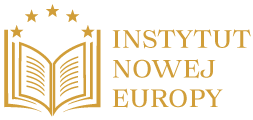









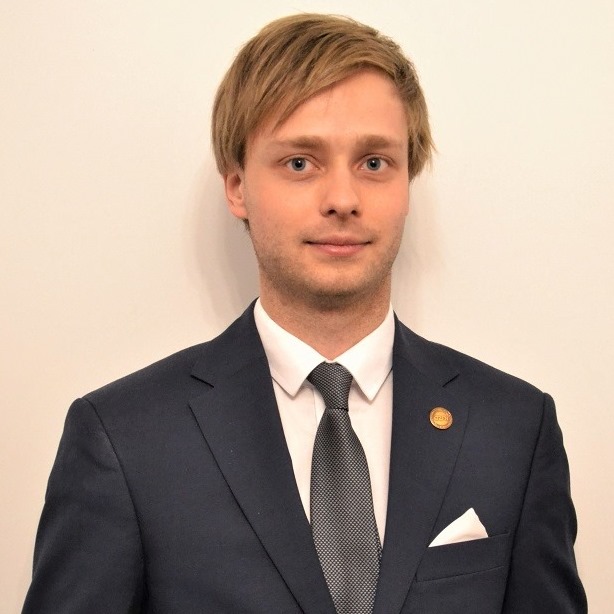

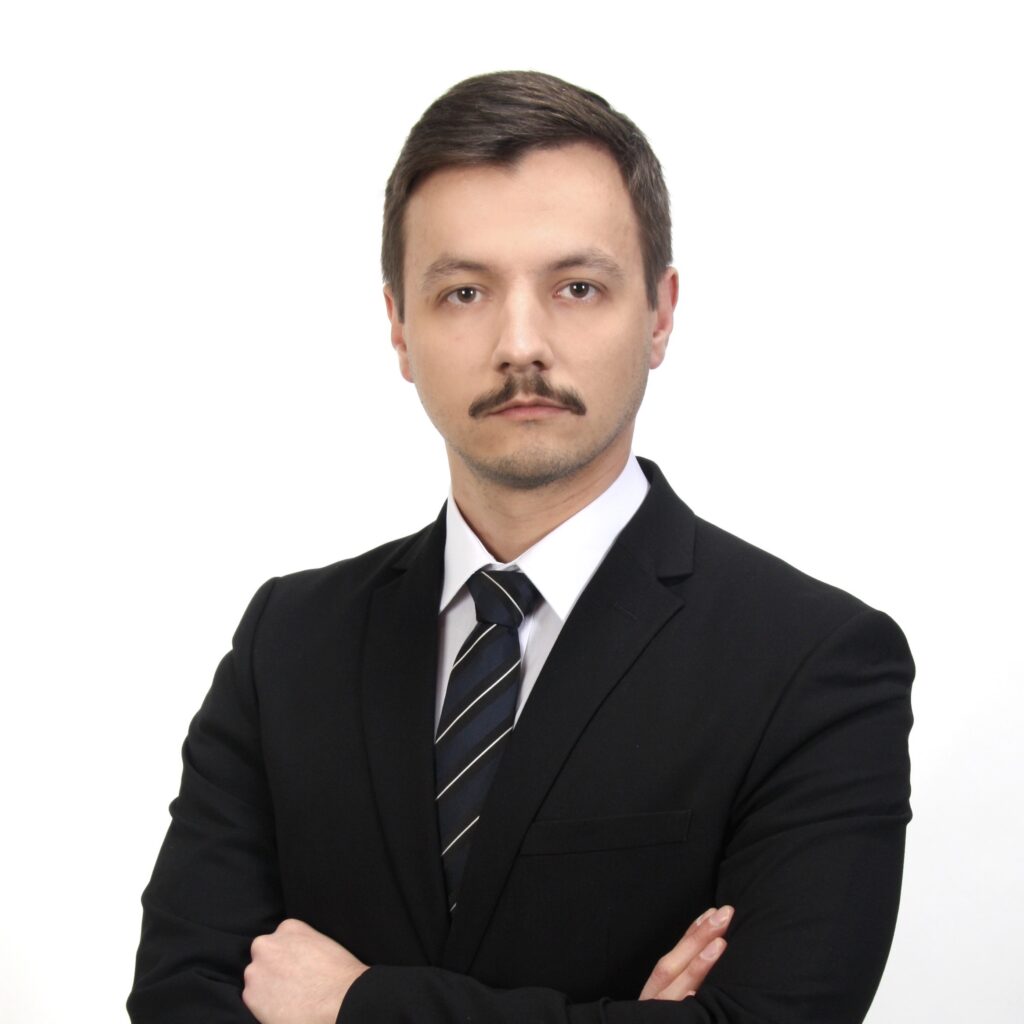

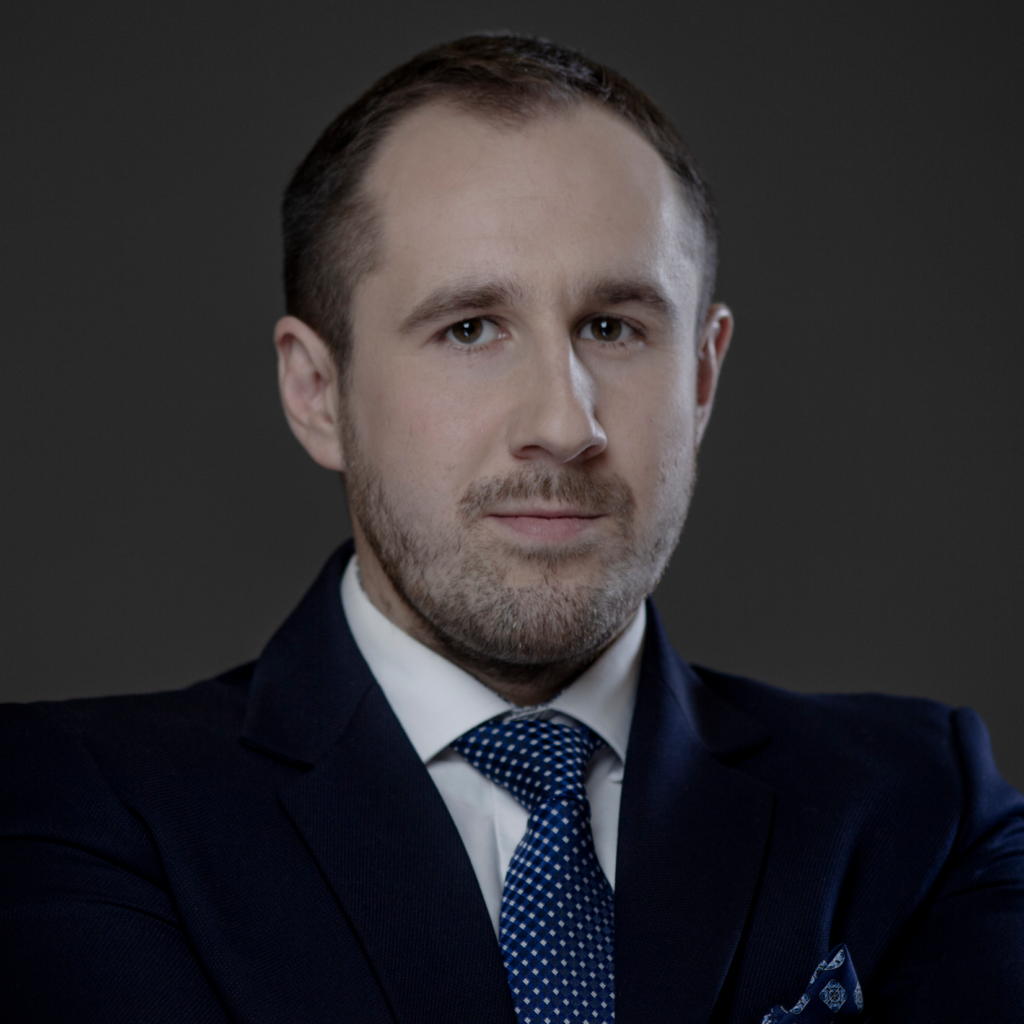





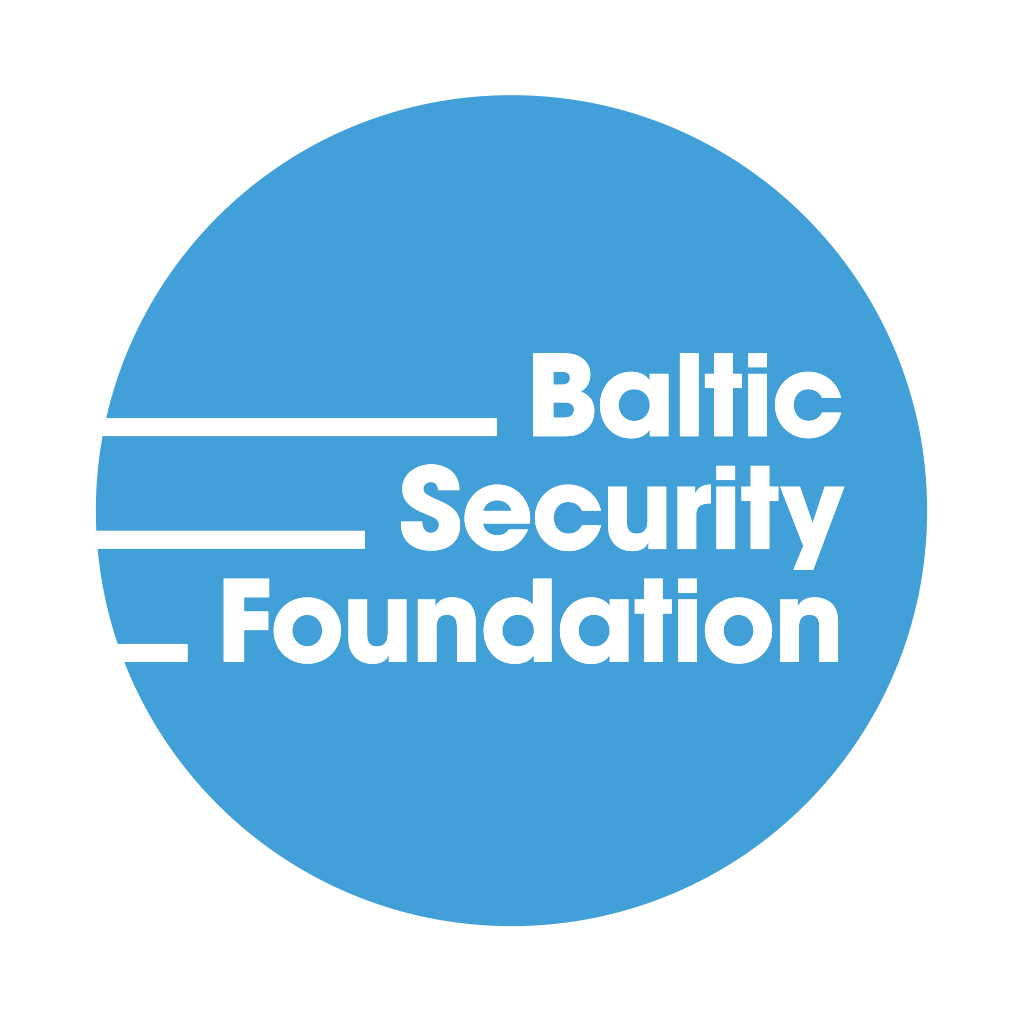
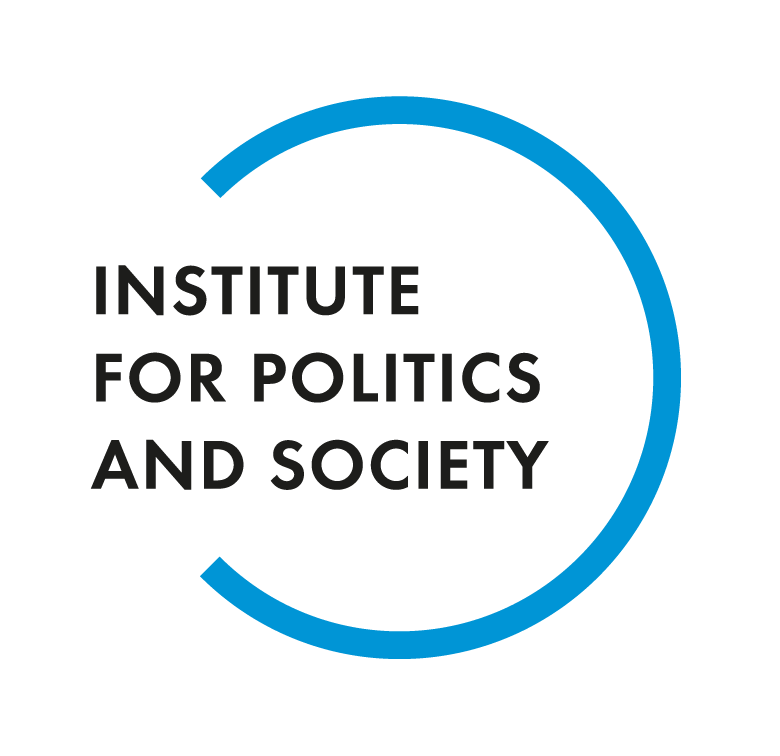


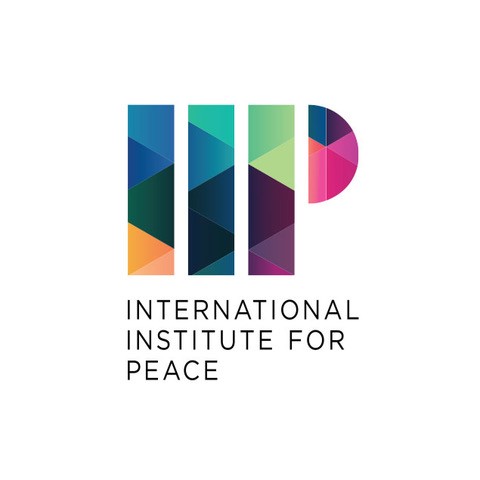
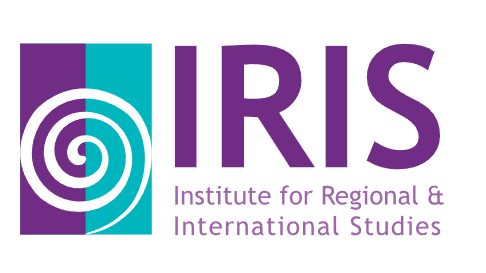
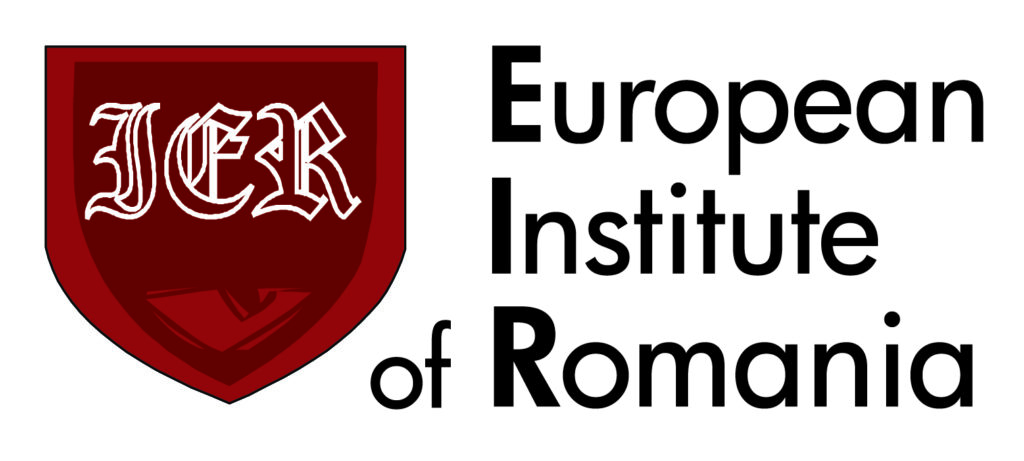
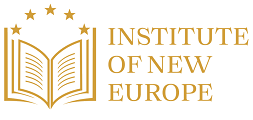
Comments are closed.